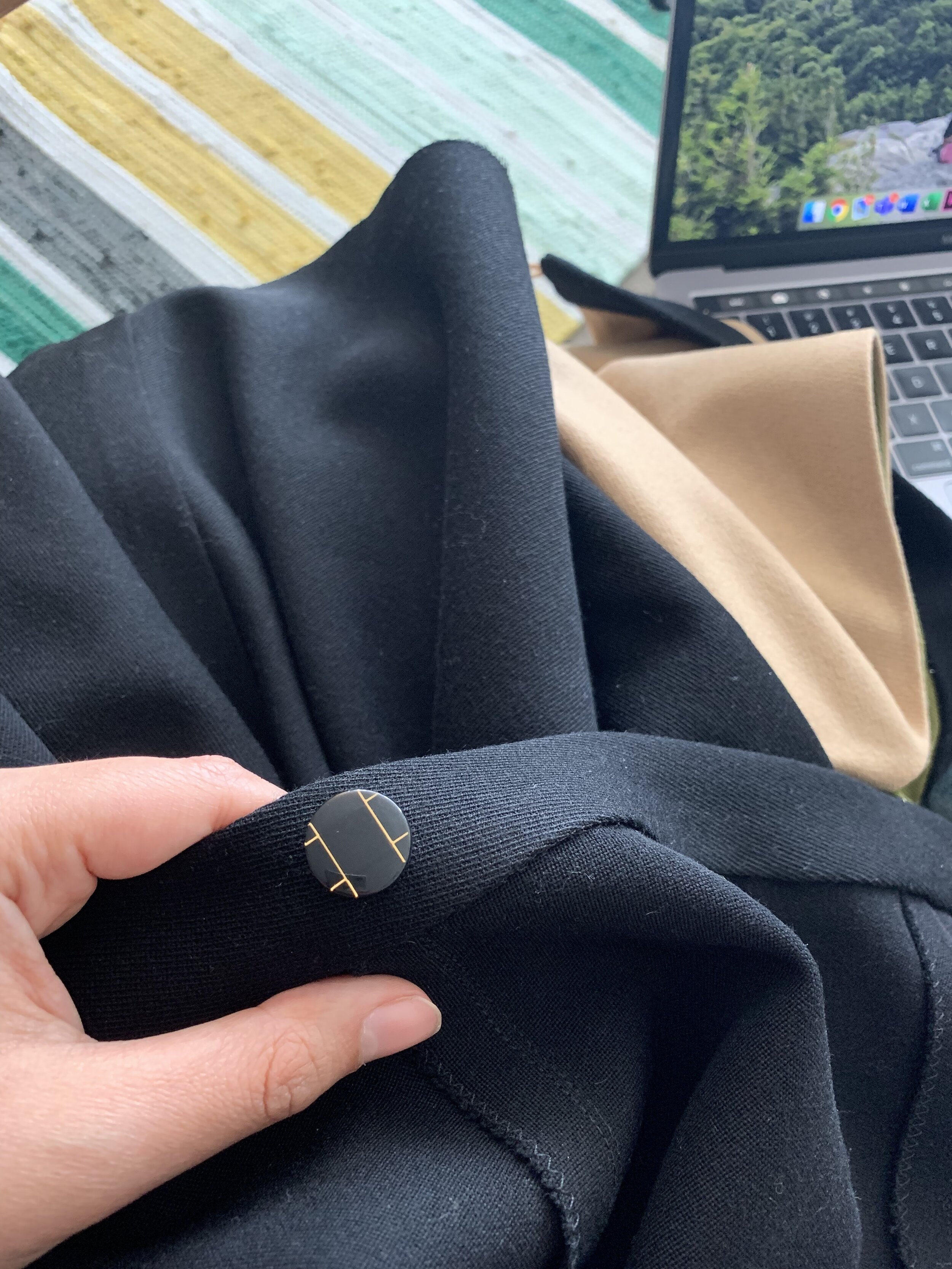Throughout the past year I’ve been working on making this into a smooth process. Below are the steps I take in order to create a piece of clothing.
Pattern Selection
Some sewists buy fabric and then find projects, others look for projects then fabric. I am definitely in the latter group as I find it contributes to less waste and clutter.
I get most of my pattern inspo from Instagram. I found a few individuals that have a similar style to what I like to wear and after I started following them, the algorithm picked up the rest ;).
My favorite pattern companies so far have been: Closet Core, Papercut, Megan Nielsen, République du Chiffon, and Deer and Doe.
Fabric Selection
This is quite possibly my faaaav part of a new project. I love finding that perfect fabric in that perfect colour! I probably spend way too much time browsing ha! but it’s something I find fun to do while I watch TV.
One thing that is very important to me is choosing fabric that is as sustainable as I can find. That could mean different things as environmental impact and ecological footprint can be really difficult to gauge, especially when it comes to fabric production. At this point, I do my best to select fabrics that are at the very least made out of natural fibers (cotton, linen, hemp…etc). If they are certified organic or are sustainably produced, that’s even better - I will be making exceptions for technical wear.
The other important part of fabric selection for me is that it’s purchased from a small business. I buy most of my fabric at my local shop Fabrications. I also regularly use Mulberry and MacNab (Hamilton, ON) and Blackbird Fabrics (Vancouver, BC), as they often carry a different selection.
Fabric and Pattern Prep
One thing you learn very quickly is that sewing is really 90% measuring, cutting, and pinning. The actual sewing part can be quite insignificant in terms of time.
I have to do a lot of adjustments as most patterns are drafted for individuals that are 5’5” or taller. I’m slowly learning how to do this and the process has definitely gotten faster.
I will be dedicating most of my blog to this part of the process.
The Finishing Touches
The final part of the process is adding some details. Often they are hidden things like buttons or fun bias tape, but they truly are what make a handmade piece unique.



